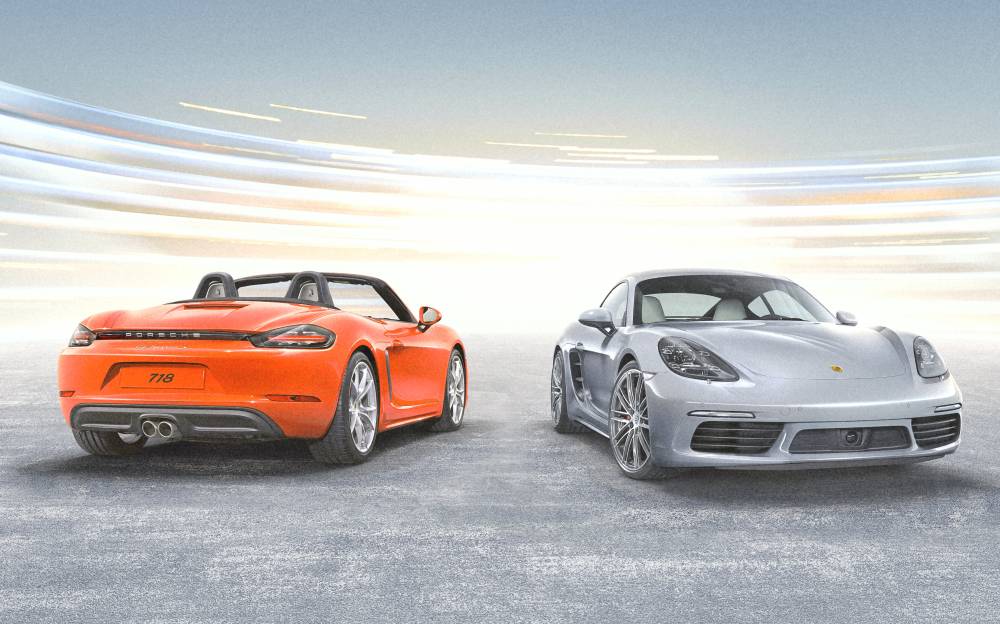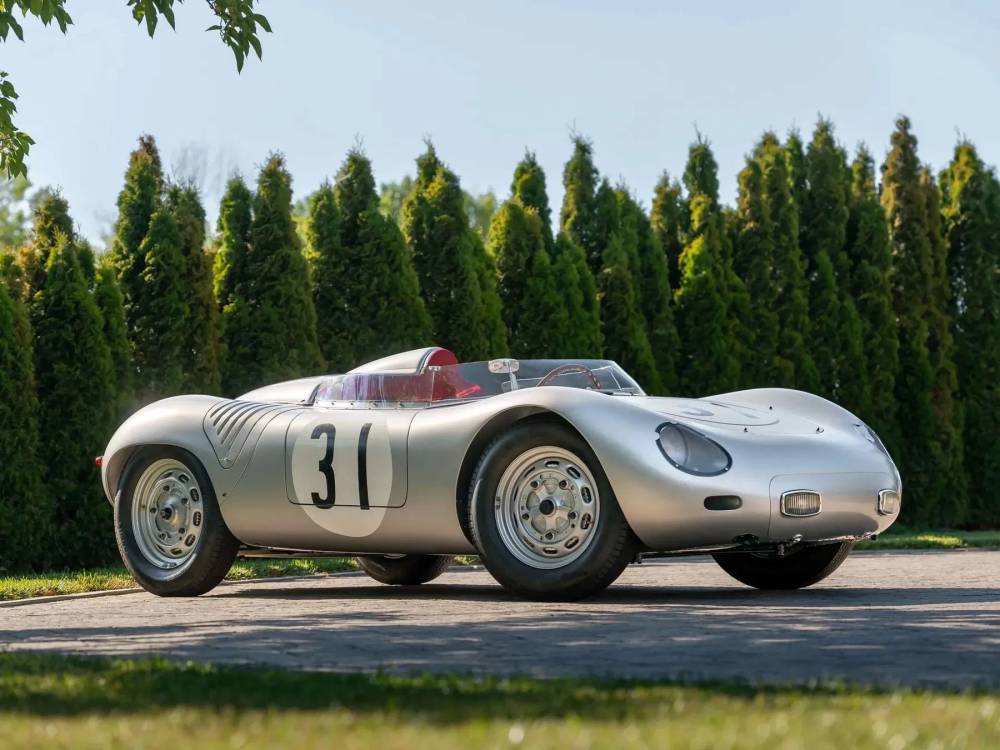Porsche 718 Boxster and Cayman—the 718 RSK lives on

On the dashboard of the Porsche 718 Boxster and 718 Cayman are details evoking functional elements on the legendary 718 RSK — one of the most successful competition sports cars in Porsche’s history.
The current 718 models’ air-conditioning vents and clock binnacle are shaped identically to the rear grille and headrest fairing of the 718 RSK, design touches that not only connect the modern sports cars to their precursor, but also illustrates the performance DNA linking the 718 series.
Introduced in 1957 as an even more racing focused model developed from the iconic Porsche 550 Spyder, the 718 RSK was a purpose-built race car with a lightweight frame and a mid-mounted flat-four boxer engine.
Barely two years upon its introduction, the 718 RSK won the Targa Florio, with Porsche sweeping the top three positions in this historic endurance race. It added a class win at the 12 Hours of Sebring, another at the Nurburgring 1000 Kilometers, and dominated the European Hill Climb Championship. In the US, it dominated the Sports Car Club of America race series, routinely clinching titles.
The 718 RSK lived up to its “RS” designation, which stood for “Rennsport” (racing sport). The “K” referred to its revised “Kurvenlenker” rear suspension, a design that enhanced handling and stability through corners.
Porsche reintroduced the “718” designation to deliberately link the 718 Boxster and 718 Cayman to the race-winning RSK lineage.

While the modern sports cars are now equipped with advanced suspension systems, sophisticated driver aids, and the latest technologies, they continue to use a boxer engine, mounted just ahead of the rear axle, to drive the rear wheels.
This results in near-perfect weight distribution and a low center of gravity, translating into exceptional cornering ability, direct steering feedback, and the kind of road-holding stability that made the 718 RSK a track legend.
The Boxster, first launched in 1996, and the Cayman, introduced in 2005, reaffirmed the performance benefits of the mid-engine concept. Today, the current 718 generation continue to be a fitting tribute to the 718 RSK’s mechanical purity.
The models also represent the last internal combustion engine-powered sports cars in the 718 lineage.
In the 718 Cayman and 718 Boxster, this means a 2.0-liter turbocharged flat-four engine producing 300 hp and 380 Nm, good for 0–100 km/h in 4.9 seconds.
Up a notch is the 718 Cayman S with a 2.5-liter turbocharged flat-four engine creating 350 hp and 420 Nm, leading to a quicker 4.2-second sprint to 100 km/h.
The naturally aspirated 718 Cayman GTS 4.0 offers 400 hp and 430 Nm from a 4.0-liter flat-six engine, good for a 0-100 km/h time of 4.0 seconds. Paired with the engine are motorsport-derived equipment like PASM sport suspension, high-performance brakes, and Porsche Torque Vectoring with a mechanical rear differential lock.
The pinnacle model, the 718 Boxster Spyder RS, is fitted with the same 500-hp, 450-Nm, 4.0-liter flat-six engine used in the Porsche 911 GT3. Capable of revving to 9,000 rpm, it is mated to a short-ratio seven-speed PDK, and can send the sports car from rest to 100 km/h in just 3.4 seconds. This most powerful of mid-engine Porsche road cars ever built can reach 308 km/h even with its soft top down.
Clearly, the 718 Boxster and 718 Cayman represent the evolution of the 718 RSK’s philosophy, refining this through decades of continuous improvement. Those air-conditioning vents and clock binnacle tell this story.

















